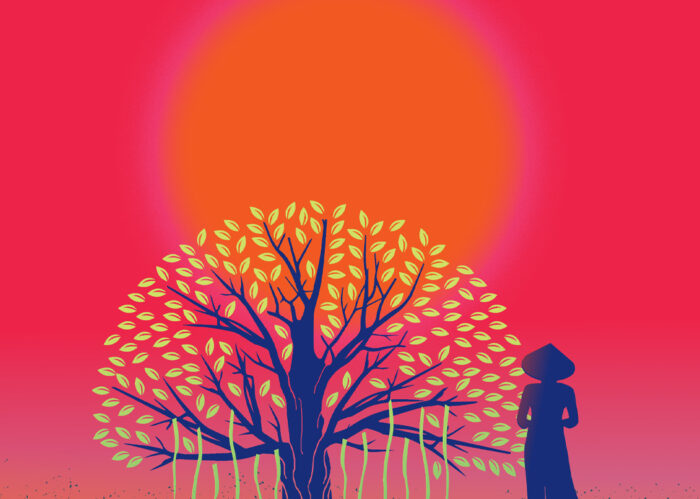Inspiration and the Eighties Anthem
 Imagine, if you would, a writer. Let’s put him in his car. He’s listening to the radio. (Kickin’ it old school, as it were.) Actually, he’s only half-listening, because really he’s thinking about deadlines. And lunch. And that Tweet he can’t get back. (Because he is a modern man, but a man of occasional regrets.) But then he stops. Because something tells him to stop.
Imagine, if you would, a writer. Let’s put him in his car. He’s listening to the radio. (Kickin’ it old school, as it were.) Actually, he’s only half-listening, because really he’s thinking about deadlines. And lunch. And that Tweet he can’t get back. (Because he is a modern man, but a man of occasional regrets.) But then he stops. Because something tells him to stop.
It tells him to collaborate.
And, yes, it tells him to listen.
And he does—all three in quick succession—because Vanilla Ice is telling him to. Right then, right there, faster than he might have pegged his jeans back in the day, he has been struck by the muse. That’s right, sometimes the wheels start turning for the oddest of reasons. Inspiration can be found in great works of art and artistry, sure. But also in the mundane and arcane. Which is really just another way of saying, we heard “Ice, Ice Baby” one day and we got to thinking about unlikely muses. Like Vanilla Ice. Who, in addition to being a self-proclaimed lyrical poet, also knows a thing or two about collaboration (ahem, David Bowie sample). Naturally, all of this made us want to survey some Algonkians—authors and art folks and other agents of awesomeness—to see what makes them stop, collaborate and listen.

Caroline Leavitt, author of Is This Tomorrow: “For many years, my inspiration was actually my tortoise, Minnie. He lived in my office, in a huge glass tank, though I let him wander around on the floor, and the gentle tick of his claws against the wood relaxed me. Somehow, feeling the presence of this wonderful, unique, little living creature in the same proximity unleashed creativity. Sometimes, it was getting up and stroking his glossy shell, or just watching him, that would help me unlock a scene. When he died recently, I was bereft, but a high school friend of mine created this amazing painting for me of Minnie walking on the floors of our house. I keep the painting right by my desk, and often, when I am struggling with plot or character or theme, I look at the painting. I swear I hear his tiny nails on the floor. I relax and then the words flow.”
Drew Perry, author of Kids These Days: “I end up getting inspiration from stray detail more than almost anything else—that and strange obsession. I’m attracted to the odd bits of American life, like parking lot ice machines and painfully named landscaping companies (The Lawn Ranger) and putt-putt courses and things of that nature. There’s a store down near a beach we go to called “Worms and Coffee.” I get attached to things that offer up, on the face of them, a string of questions. Worms? you think. And coffee?”
Laura Williams, Algonquin art director: “I am trying to find the hole in the wall, so I look for the jarring, something that stops you and gets your attention. When I lived in New York, going for walks was always a good source of inspiration, there’s a sort of ‘condensed craziness.’. The streets of New York are always good for condensed craziness.”
Lauren Moseley, poet and Algonquin assistant marketing manager: “In addition to reading the work of other poets (Jean Valentine always flips the switch for me), hikes along the Eno River, zoology, mythology, Borges’ The Book of Imaginary Beings, and films have been especially fruitful sources of inspiration. Images from the movies Coal Miner’s Daughter, Y Tu Mamá También, and Paris, Texas, to name a few, have all found their way into my poems.”
Bill Roorbach, author of The Remedy for Love:“I always have great ideas at the movies. I don’t know what it is about them… the dark theater, the power of visual narrative, the popcorn… And while the projector clatters, I plot whole novels, scribble illegible notes, never remember a thing. But I’m refreshed and ready to do battle come morn!”
Brock Clarke, author of (natch) The Happiest People in the World:“I went to Denmark with my family in 2005 . . . and found myself loving it—the beautiful people riding three speeds, the gloomy weather, the buildings that looked more and more grand the more they were rained on—which I thought remarkable, because I don’t love anything. After a couple of weeks I went home, reluctantly, and soon after I discovered that the Danes had been named by one study or other the happiest people in the world. Well, yeah, I thought. And then not long after that I learned that a bunch of Danish cartoonists had drawn and published cartoons of the prophet Muhammad, including some seen as blasphemous by some Muslims and non Muslims, which caused then a series of protests, bombings, assassination attempts. Suddenly, Denmark didn’t seem so happy anymore, and of course it probably already wasn’t, was probably unhappy in the same way and for the same reasons lots of places and the people in the them are unhappy, but anyway, the whole thing made me mad, at everyone, including myself for falling in love with a place so quickly and stupidly, and so I wrote a novel in which, as punishment, I sent a fictional cartoonist and a fictional possible would-be assassin to my home region, upstate New York, the unofficial-but-well-known home of the unhappiest people in the world.”
Gabrielle Zevin, author of The Storied Life of A.J. Fikry, whose current work-in-progress was inspired in part by the Muppets: “Top six muses for me: Personal failure/my shortcomings, love, fear, death, and above all, this pretty, sad world and the gorgeous weirdos who live in it.”
-
Overall Score
Reader Rating: 0 Votes



